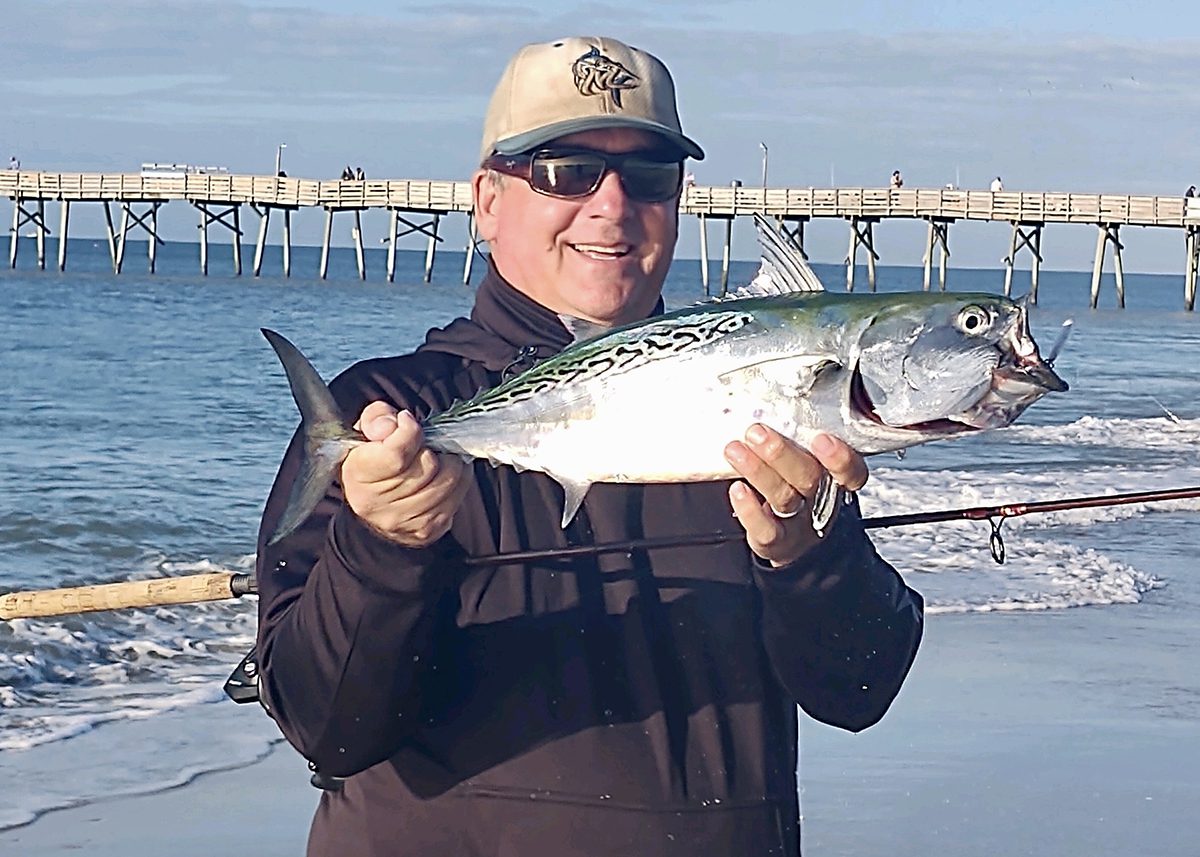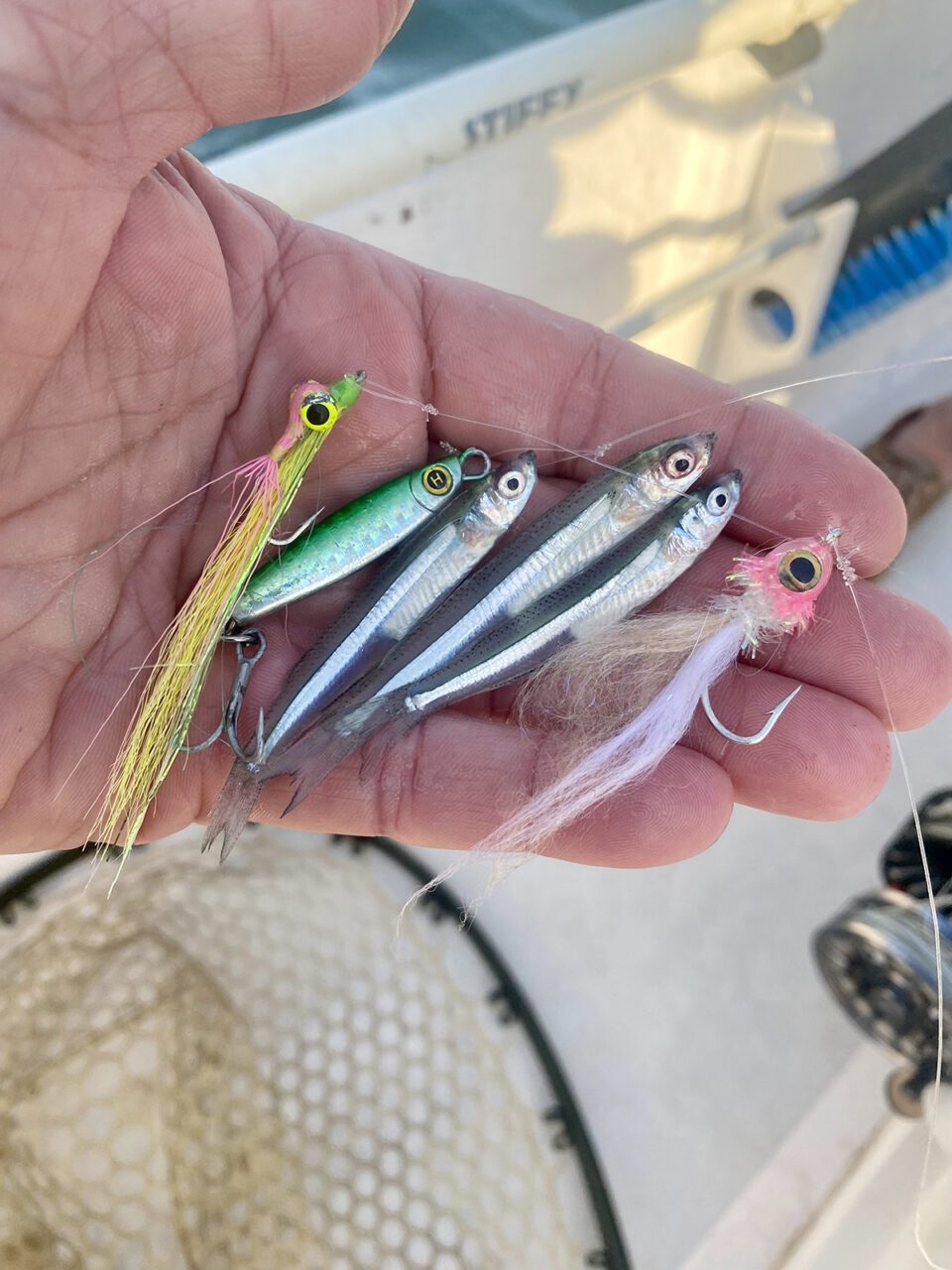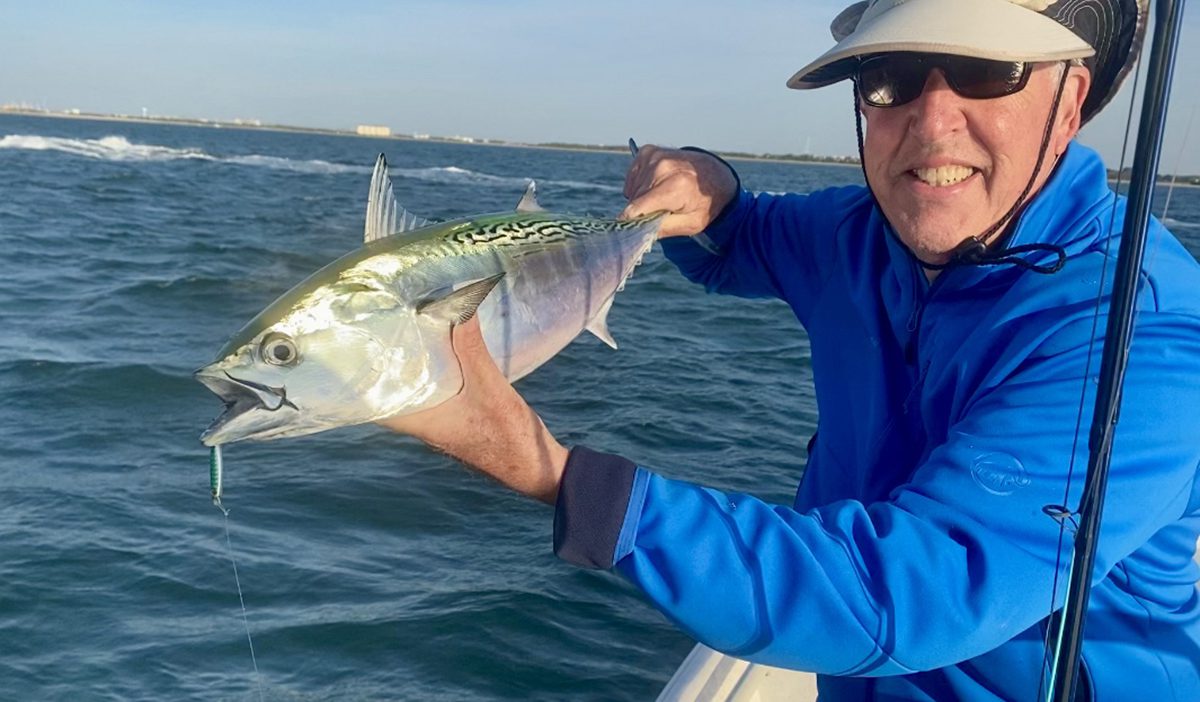
Some people will tell you that the best fishing on the East Coast is to be found in places like the Florida Keys, Chesapeake Bay or Cape Cod. I’ll tell you the best fishing that attracts the most high-profile anglers is right here off the coast of North Carolina for two months in the fall.
The awesome run of false albacore off of Cape Lookout is unequaled anywhere in the country from the middle of October to the end of November. Nowhere else can you reasonably expect to see a tuna species running bait in protected waters less than 30 feet deep (and often less than 10 feet deep) with the kind of consistency you can here. Top it all off with lovely clear water and you have a sight-fishing opportunity that is unparalleled for a fish of this type.
Supporter Spotlight
So, while I love Florida flats fishing and want to make a trip to Montauk someday, I am perfectly happy in the waters off Cape Lookout. I have caught false albacore, or fat alberts, near the jetty on Labor Day and along Shackleford Banks in December. It’s a long season.
When the bigger fish of over 15 pounds move inshore in early November, many anglers will report hookups well in the double digits. That is enough to tire you out.
You may be wondering at this point what is so great about them? Have you ever hooked a fish from 8 to 15 pounds (on average) that will take off and run more than 100 yards of line off your reel in just a few seconds? All this can happen while using medium-weight spinning tackle or flyrods. That is what false albacore fishing is all about.
Let me give you some background on this fish. This is not the true, deep-water albacore that can be found in a can at your local market. The official name for fat alberts is “little tunny.” You could also call it Euthynnus alliteratus, but only if you really need to impress your friends.
It is not a bonito. It is not a bluefish. These misidentifications lead to much confusion. You will hear many reports on the radio of bonito being caught. That is usually from those not wanting to catch them. Bonito are not good to eat and tend to tear up carefully prepared trolling rigs. The surest way to know if you have a fat albert is to look for the black spots around the pectoral fin and the squiggly markings on the back.
Supporter Spotlight
Now let me tell you a couple of things about how to get one of these baddies on the end of your line. I am a fly fisherman. I would rather catch one fish on a flyrod than 10 any other way. However, if you are a first-timer and not a fly angler, do not despair, because these things will hit small jigs as well as, if not better than, any fly ever invented.

The best lures are small split-tail plastic baits around the size of a man’s finger in any color that looks like a natural minnow and the epoxy-coated metal jigs made by different companies, including a local outfit called Beach Bum Lures out of Havelock. Both are available in just about any tackle shop on the coast of North Carolina. Use a 4000 series reel that is capable of holding a full spool of 20-pound test braided line, and a 7-foot to 7 ½-foot, medium-action rod.
Don’t go too light on these fish. If you take too long to bring one to the boat, they might die. No rolling over and giving up for the little tunny.
For fly fishing, I prefer a 10-weight rod. This is heavy enough to cast into strong winds that often blow out of the north at this time of year and to bring the fish up from the depths at boat side without breaking. Plus, it is light enough to cast all day without wearing yourself out.
Use an intermediate line and a leader about 8 to 10 feet long with a 20-pound fluorocarbon tippet. Use a nice baitfish fly tied on a size 1 or 2 hook. Don’t make it too thick. The glass minnows that are the predominant prey species are about the size and shape of a man’s middle finger. Add some flash material to catch the eye of a fast (40 mph) swimming albert.
Now that we are rigged up, let’s go after them.

In the fall, they can often be found outside inlets from Cape Lookout south to the South Carolina line. When you get out, there will often be albacore blasting at glass minnows right there. If that is the case there may be a bunch of boats chasing them.
In this situation the first thing you need to think about is courtesy. Don’t pay attention to the people who are racing back and forth chasing surfacing schools at warp speed. Figure out which way the fish are moving. It will often be very obvious. Get in their line of travel and drift into them from uptide or upwind. Another boat may get in your path. Try to keep cool. People tend to act funny when there are big fish visibly feeding in shallow water.
If you are spin fishing, keep casting around the boat. You will often hook up even if there are no fish showing on the surface. Just because you can’t see them doesn’t mean they are not there. When you finally get a chance to cast into breaking fish, get your fly or lure as far into the melee as possible.
Start a moderately paced retrieve. You don’t have to rip it in. Keep it in the strike zone. They may not see your first presentation. Get it in there again! There may be hundreds or thousands of fish in front of you right at this moment. When one sees it, you can bet that fly or jig will be inhaled.
Now is when the fun begins! Your hook is in the mouth of a fat albert. The fish will then take off. If you have never fished like this with casting or fly tackle before, you will be amazed at how fast a fish of this size can swim. This is the fastest fish you can regularly catch within sight of land around here.
The first run of a bigger fish will often take close to 150 yards of line. Be calm and let it go. If you are running out of line you may need to start the engine and keep up with your rapidly depleting spool. An albacore may then double back and swim right at you. Keep the line tight and your rod bent, retrieve line as fast as you can. Be prepared for another run at any time. Sometimes the big ones (16 pounds and up) will come all the way in and then do the whole thing all over again.

When it comes to landing a fat albert, no fish could be more accommodating. He has a built-in handle. The tail is very stiff and easy to grab. Get ahold of it and lift the fish into the boat. Work quickly at this point. Have your long-nose pliers available. Get the hook out as fast as you can. I have even switched over to barbless hooks.
If the fish is out of the water too long it will definitely die. They are a proud fish and fight to exhaustion. When the hook is out you can take a couple of quick photos. Then drop the fish headfirst into the water from about waist height. Don’t swish it back and forth. Simply dropping the fish in the water from waist height will allow it to get a fast burst of water and oxygen over its gills and allow it to swim off quickly.
One final note: Don’t let your fish run too far away from you on that initial run. I’ve had a couple taken off of my line by sharks. Needless to say, there are other creatures that also enjoy the pursuit of false albacore.








